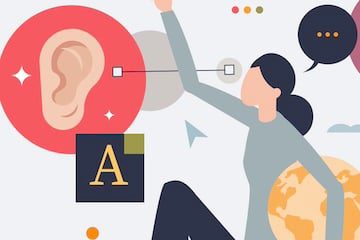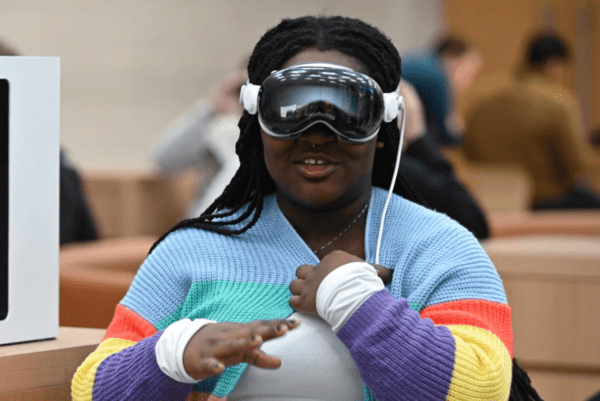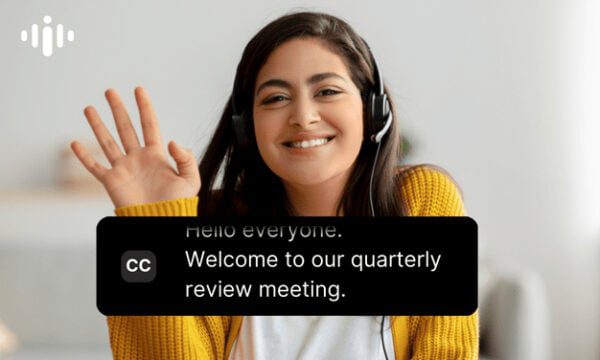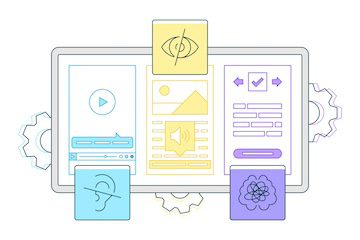Last year my company, Beardbrand, was sued for alleged violations of New York laws similar to the Americans with Disabilities Act. The claim was frivolous.
It’s not in my nature to settle a bogus claim, so I hired Mark Berkowitz, a New York-based lawyer experienced in accessibility matters. We made clear to the plaintiff’s attorney our refusal to pay the claim. The attorney eventually dropped the case.
I asked Mark to recap the process. The entire audio of our conversion is embedded below. The transcript is edited for length and clarity.
Eric Bandholz: Give us a rundown of your work.
Mark Berkowitz: I’m an attorney and partner at Tarter Krinsky & Drogin LLP in New York. I have a background in intellectual property, starting as an electrical engineer before transitioning into a patent attorney and litigator. Over time, I shifted toward trademark litigation and eventually began working extensively with ecommerce merchants, including Amazon sellers, handling various forms of litigation.
Beardbrand was the target of a very common lawsuit involving the Americans with Disabilities Act. Yours was one of 4,000 to 5,000 new cases each year. These lawsuits stem from a series of laws designed to protect disabled individuals, such as those who are blind or use wheelchairs. At some point, certain courts and the U.S. Department of Justice broadened the definition of “public accommodation” to include websites. Websites must meet certain accessibility standards, even though no legal requirement outlines what they must do.
Plaintiffs’ lawyers select an individual to represent a class, claiming that a website doesn’t provide adequate accommodations for disabled people. This is a gray area because no concrete law specifies what constitutes sufficient accessibility. There are guidelines, but nothing definitively says, “You must meet this standard.”
In your case, the plaintiff filed the lawsuit in a New York state court, which is common for these cases. Your options for handling the lawsuit vary depending on whether you’re in federal or state court.
Bandholz: Why is that?
Berkowitz: It depends on the statute they use to sue. In federal court, lawsuits are typically filed under Title III of the Americans with Disabilities Act. This statute doesn’t provide monetary damages but can hold you accountable for litigation costs. The threat in federal cases is that they’ll drag you through a lengthy legal process, forcing you to spend a lot of money, which is why many people choose to settle.
In state court, however, particularly in New York, they’re suing under state and city laws, which allow for monetary damages. Some of these damages can be significant. One key difference in state court cases is that you can argue the plaintiff never reached out to you before filing the lawsuit. They claim they couldn’t use your website, but they didn’t try to notify you before suing.
That approach is common sense — if they had contacted you, you could have helped them. This argument has been accepted in other cases, and we used it in Beardbrand’s defense. We pointed out that the complaint didn’t specify what the plaintiff did beyond visiting the website and suing. When they tried to amend the complaint, they still didn’t address this issue. We pushed even harder at that point, showing they were being litigious without advancing the case. Eventually, they gave up.
Some people would rather have quick finality, pay a set amount, and be done with it. Not everybody has the stomach for what you did. If you’re willing and able to fight, the plaintiff will eventually give up.
Bandholz: As ecommerce operators, we’re willing to fight for our businesses, but these predatory lawyers are not honorable. They started at $75,000. We might have settled if they’d started lower, but their high offer pushed me to fight harder out of principle.
Berkowitz: Exactly. They came down to a certain point, but it was clear they had a floor they didn’t want to go below — whether it was a firm policy or just how they operate. We let the case run for a bit, and then we hit them with some motions, which brought it to an end.
For some people, it’s easier just to pay and move on, but for those willing to fight, the plaintiff’s lawyers often give up when they realize you’re not backing down.
Bandholz: What can ecommerce operators do to avoid these lawsuits?
Berkowitz: The best practice is to make your website as compliant as possible. Most businesses aim for the WCAG 2.0 standard at the intermediate level. Your developer should know these guidelines and how to adjust your website accordingly.
Some basic practices include ensuring good contrast for text, using accessible fonts and colors, adding proper page titles, and enabling screen readers to navigate the site effectively. However, even with all these measures, there will always be something a plaintiff can point to as a flaw. You can use a dozen website scanners — they’ll always find something wrong.
Bandholz: Is it possible to recover attorney fees or counter-sue these plaintiffs?
Berkowitz: Unfortunately, no. There’s no real way to counter-sue in these cases. You could theoretically recover attorney fees if you took the case to trial and won, but that would take years and cost hundreds of thousands of dollars. It’s usually not worth it. If the plaintiffs back down, it’s often best to take it as a win and move on.
Bandholz: Can plaintiff lawyers see that an ecommerce defendant settled?
Berkowitz: To an extent. They can see that the company was sued, and a dismissal was filed. They’re going to assume that a settlement was reached. In most cases, they may not know what happened behind the scenes. In some cases, plaintiff attorneys have been able to get consent judgments, where the defendant admits that their websites were not compliant and would make them compliant in the future. Merchants become a target when they do that.
Bandholz: How do these plaintiff lawyers decide which ecommerce businesses to target?
Berkowitz: They likely use various tools to identify successful companies. There are public databases that provide estimates of sales volumes for specific websites. They probably also monitor social media and the news for businesses that are getting much attention.
Your company, Beardbrand, had a lot of media coverage, and you were even on Shark Tank. Even if that was years ago, it’s still a sign of success that might catch their attention. Some businesses inadvertently make themselves targets by bragging about their growth or success on social media.
Bandholz: What makes for a good lawyer-client relationship?
Berkowitz: It is crucial to work with a lawyer who understands your situation and goals. Be upfront about what you’re willing to spend and how far you want to take the case. Transparency on both sides is key to a good relationship.
As a client, be honest about any past issues with your website, whether or not you’ve tried to make it accessible. Surprises can be detrimental to your case. As lawyers, we say, “Bad facts, no problem” as long as we know about them. Just be clear about what you want to achieve and any obstacles you’ve faced.
Bandholz: Where can people find you?
Berkowitz: You can find us at TarterKrinsky.com or contact me on LinkedIn.













